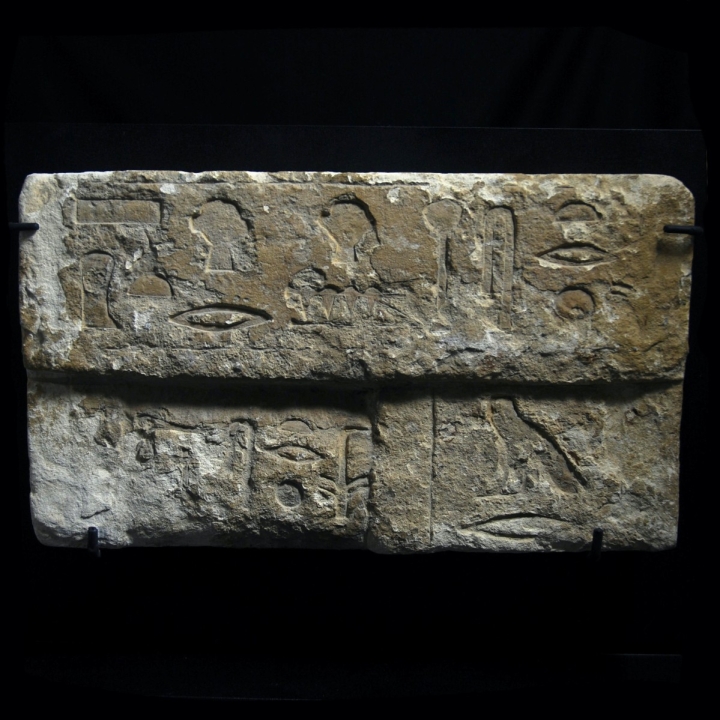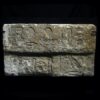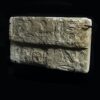Limestone Fragment of a False Door from the Tomb of the Official Seshemnefer
Culture: Egyptian
Period: Old Kingdom, 5th or 6th Dynasty, 2504-2216 B.C.
Material: Limestone
Dimensions: 17.8 cm x 30 cm
Price: 6 000 Euro
Ref: 1330
Provenance: Collection of William Tyssen-Amherst, 1st Baron Amherst of Hackney (1835-1909). Auctioned from the estate at Sotheby, Wilkinson, Hodge 1921, lot 29. Acquired there from the well-known art dealer Joseph Altounian (1890-1954) for his private collection and exported from Egypt prior to 1937 when Altounian moved to Mâcon in France. Then Tajan Auction Paris on 13 November 2001, lot 38. Accompanied by a French antiquities passport.
Condition: The surface with some wear as seen on the photo.
Description: Limestone fragment of a false door with a crossbar and a semi-cylindrical drum inscribed with recessed hieroglyphs. The false door was probably placed outside a burial chapel dedicated to a middle-ranking official. The inscription names Seschemnefer as the owner. The translation reads as follows: "The custodian/administrator of the royal property, the inspector of the ones in charge of šzp, the one in charge of the secrets […](?) [Seshemnefer]. The administrator of the royal property, Seshemne[fer]. The overseer [(of) …]". The significance of this fragment lies in the mention of the administrative title 'šzp', which as such was previously unknown and was only found on graffitis in Wadi Hammamat. According to the fundamental work of the Egyptologist Andrés Diego Espinel based on this fragment, entitled "A new reading of an Old Kingdom administrative title related to quarry expeditions" (the article will be published at the end of 2024, bibliographic information will follow), the title stands for a supervisor over quarry expeditions. False doors are part of the funerary architecture, they served as a bridge between this life and the afterlife. On the one hand the deceased could interact through this “door” with the posterity, on the other hand his surviving dependents can get in contact with him and present offerings in front thereof. According to reports this fragment comes from from the area around Saqqara. Mounted.





